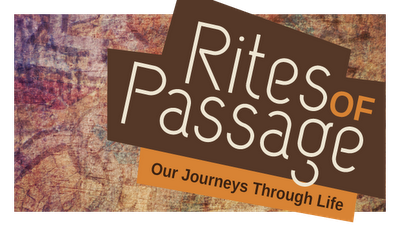
Rites of Passages are known to be ceremonies that mark important periods of transition in a person’s life; some of them are, birth, puberty, marriage, death, etc. These ceremonies usually involve different series of ritual activities designed to prepare individuals to new roles they should asume.
Rites of Passage vary depending on the culture; for example in Latin America we can see how Quinceañera is celebrated, while in the United States Sweet Sixteen is celebrated; however, they both mark periods of transition in a girl’s life. In the world today various cultures still hold different rites of passages, similar to Quinceañera and Sweet Sixteen, these cultures are the Apache, and the Fulani tribes in Benin West Africa.
In the Apache culture every 4th of July girls that recently turned 13 are required to participate in a ceremony that will establish their rightful place in the Apache community, as women. This ceremony is made in an span of four days; during this four days girls dance, pray, and meditate preparing for their new step in life. After the ceremony ends all the community gathers, recognizing the girl’s new place as a woman in the community. This rite of passage serves as a symbol to the culture; it renews and protects the Apache’s culture way of life.
In addition the Fulani tribes, in Benin West Africa, are known for having the most painful rites of passages. In this culture when boys and girls turn 13 they have to go trough painful rituals to earn their place in the community. The girls’ rites of passage consists in getting a series of ink tattoos, which are imprinted in their skin with needles, without crying; this tattoos have meanings behind them and are supposed to help them in their future. Getting this tattoos will earn the girl her rightful place in the community, as a grown woman, and will allow her to get married. Even tough the girls’ rites of passage is very painful the boys’ is even more. When they turn 13 the boys have to go through a ritual that tests their bravery. In this culture the boys compete to each other in a whipping competition. Each boy gets whipped by his opponent, if one of them cries he doesn’t pass the test. The winner will earn his rightful place as a grown up man in the community, and will allow him to get married.

Likewise in the cultures of Apache, and Fulani in my culture adulthood is also marked by a rites of passage, known for the name of Quinceañera. This ceremony is held when a girl turns fifteen; it marks adulthood, reaffirms the vow’s parents took in her baptism, affirm’s her faith to God, and presents a new woman to the community. One of the most important rituals that happens this ceremony is the Quinceañera dancing with her father; the dance symbolizes her father acknowledging her new place in the community as a grown woman. Like any other rites of passage it requires a lot of planning, sometimes even a year; but after it the quinceañera earns her rightful place in the community. Even tough in my community turning fifteen is very significant, I don’t see it like a big deal. This year I’m turning fifteen, which means I’ll get my Quinceañera party, but I’m not very excited about it. Don’t get me wrong I like the idea of having a party with all my friends, and family, but lately everyone makes such a big deal out of it that there’s a point that it sounds tedious. However, my mom insisted in getting at least a little reunion with my friends, and family.
When looking at the three different rites of passages, that are part of different cultures around the world, we see a common propose. When looking at the three of them we can see how after the initiates participate in the rites they earn a place in the community, and their are recognized by it as an official member. Another common trait that we can see is that all of these rites use different rituals, which have meaning behind them, to symbolize this transition from childhood to adulthood. In addition we can also see how these three rites of passage’s history goes back to millions when their culture was first stablished, meaning that somehow in a way they renew, and protect that culture’s way of life.
Given these points we can see how even tough rites of passage are different in all the cultures around the world, they all show transition from childhood to adulthood, mark an important period in the initiate’s life, help the initiate earn an official place in the community, and help to renew, and protect a the culture’s way of life.
